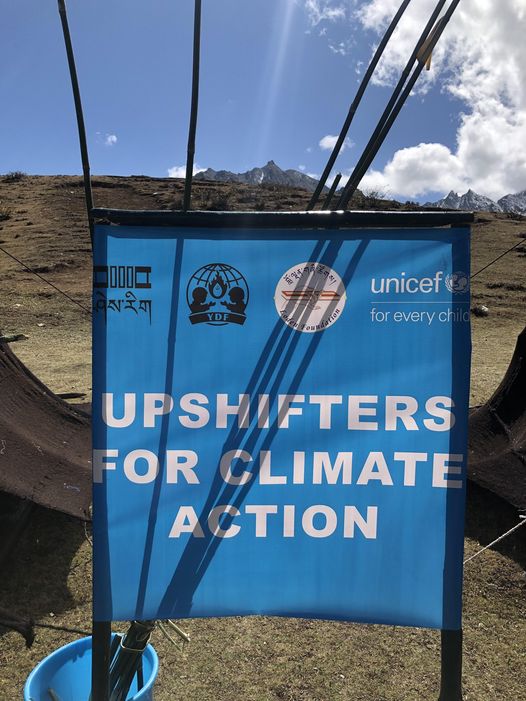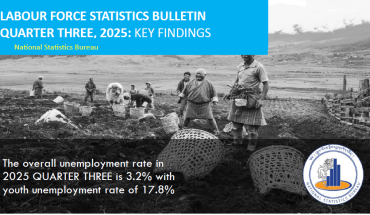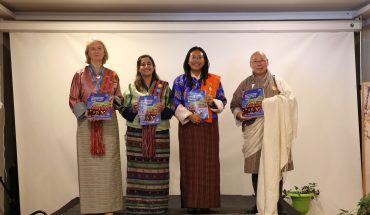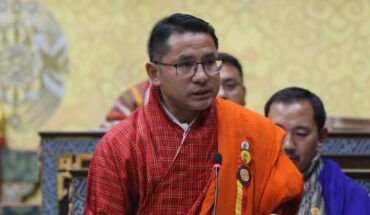
NGAWANG JAMPHEL
Gasa
High in the Himalayas, at nearly 3,800 meters above sea level, sits the remote village of Laya. Young residents are crafting innovative solutions for pressing water, sanitation, and hygiene (WASH) issues while contending with the impacts of climate change.
The Layaps, a semi-nomadic community, depend on glacial meltwater for their daily needs. However, climate change disrupts their lives, as irregular snowfall, glacial retreat, and unpredictable rainfall create water shortages, especially during the winter when temperatures plummet and access to running water is cut off for months.
“In winter, when the pipes freeze, we sometimes have to melt snow for drinking water,” says Sangay Dema, a 16-year-old student. “It takes a lot of time, and we also have to help our families.”
This water shortage impacts nearly every aspect of daily life. Routine tasks such as bathing and handwashing become challenging, and adolescent girls face additional difficulties managing menstrual hygiene. Pema Lhamo, a 17-year-old student at Laya Middle Secondary School, shares her experience: “It’s embarrassing to ask for help, but without enough water, even simple hygiene is hard.”
Nima, a 14-year-old student, highlights the difficulties younger students face in maintaining basic hygiene. “Sometimes we can’t wash our hands after going to the toilet because there just isn’t enough water,” he explains. “My teachers always tell us how important it is to keep clean to stay healthy, but it’s hard to follow these rules when water is so scarce.”
Chencho Dema, 16, adds, “We don’t have enough water for everyone when it gets really cold. I feel uncomfortable going to school when I can’t wash properly. And for girls, it’s even harder because we need more privacy and water during our periods.”
According to Tshewang, Gup of Laya Gewog, the community generally has sufficient water and sanitation facilities. “Water is not a problem in the community as of now and every household has a toilet. Hot water is also available, as we use a bhukhari (locally-made oven) to heat water. However, when winter approaches many families leave for Punakha leaving only a few people in the village as the school closes for the season.”
Through the UPSHIFT program, Laya’s youth and students from Thimphu Thromde are designing prototypes to address their community’s WASH challenges. At the recent 7th Royal Highland Festival, these students showcased their work, including a prototype aimed at tackling both water scarcity and waste management issues.
Yeshi Lhaden, a 17-year-old student from Yangchenphug HSS, leads an impactful initiative known as the “Hydrogunner” prototype, which collects moisture from the air and purifies it for drinking. Though still in its early stages, this moisture-harvesting device could be a vital resource for families and students, during the harsh winter months when water becomes increasingly scarce.
Another prototype, the “Smart Dustbin” developed by students at Motithang HSS, addresses waste management by categorizing waste into metal, paper, and plastic. Given that waste collection is infrequent in Laya, this innovation helps maintain hygiene and promotes sustainable practices.
Despite being in the developmental stages, these youth-led initiatives show promising potential for addressing Laya’s long-term WASH needs. Support from local organizations and UNICEF has provided an essential foundation, but additional resources are required to further develop and scale these prototypes. “We could improve these ideas so much with more support,” reflected Yeshi. “Right now, we’re just starting, but we’re hopeful about making a real difference.”
Nima believes that more community support could make a substantial difference. “If we had more ways to store water in winter or even simple filters, it would make our lives easier,” he shares. “We’re learning so much, but we need better tools to make these ideas really work.”
While the primary focus of the UPSHIFT program is WASH, it also emphasizes cultural preservation. Students are learning the traditional art of weaving zum (woolenkira) and crafting zhamu (conical hats). These skills connect them to their heritage and hold the potential to create future economic opportunities.
Pema Lhamo, a 9th-grade student from Laya Middle Secondary School, shared, “Through the UPSHIFT program, four of us from my school was selected, and our program leader invited Aup Kaka who taught us weaving.”
The students’ engagement in cultural preservation has been transformative, instilling in them a new sense of responsibility and pride. Teachers at Laya Middle Secondary School have observed this shift, with students now more eager than ever to contribute to their community. “They see that they can make a difference, and it’s giving them a sense of pride and motivation,” stated Kinley Dorji, the principal of Laya MSS.
The challenges faced by the youth of Laya are intensified by the region’s harsh climate. The freezing temperatures make water scarcity a persistent problem, as tanks and pipes freeze, rendering bathrooms inaccessible. This situation is particularly challenging for girls, who need clean, private facilities for menstrual hygiene.
To address these issues, Laya Middle Secondary School has partnered with the local Basic Health Unit (BHU) to run awareness programs, provide sanitary products, and create a safer, more supportive environment for students.
Having access to sanitary products and private bathroom facilities has a profound impact on students. Pema Lham, a 14-year-old student, noted, “Having sanitary pads and a private bathroom space makes a big difference, especially in winter when it’s hard to go outside.”
Pema Seldon, the health assistant at the BHU, emphasized the importance of these facilities: “Girls need a place where they feel comfortable, and that includes having access to necessary hygiene products.”
Chencho Dema feels that these facilities help boost confidence among female students. “When we have what we need, we don’t have to miss class or feel embarrassed,” she says. “It’s a small thing, but it makes a huge difference in how we feel.”
The efforts of Laya’s youth reflect a broader movement of young people in Bhutan and beyond who are responding to climate change with innovative, community-centered solutions. Despite the hardships posed by their remote location and challenging environment, these young leaders are making strides in improving WASH facilities and fostering cultural preservation.
The UPSHIFT program has empowered these youth to take ownership of their future, and their prototypes, although still in the early stages, are a testament to their vision and determination. Through continued support and collaboration with organizations like UNICEF and local institutions, these young innovators in Laya may yet see their projects fully realized, bringing sustainable solutions to the water and sanitation challenges of their community.
Note: The story is supported by UNICEF through JAB for the Journalism reporting grant on climate change and children





